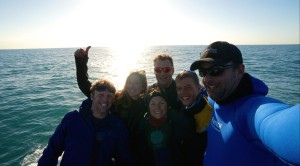After spending ten days at Mboyti looking for the sardines bait balls without succeeding I decided to try and find the sardines and I never imagined that this adventure was going to be so incredible! Many people told me that the reason why I couldn’t see the sardines spectacle was the overfishing happening down south. At that point I was full of questions and all I could think about was: “Are sardines being overfished? Are they changing their behaviour or migration pattern due to the increase of the water temperature?” I wanted to find it out by myself, so I followed Michael Aw’s advice and contacted one of the pioneers of the sardine run tours in the south coast of South Africa: Rainer Schimpf.
To uncover the mystery and discover where the sardines are I took a plane and arrived in Mosselbay, where I met my hosts for the next two weeks: Rainer and his wife, Silke. They were warm and excited in our meeting, and they asked all sorts of questions. After telling them I was selected for the Our World Underwater Scholarship Society to travel the world and learn about shark conservation through ecotourism they immediately started sharing their knowledge with me about this topic. Rainer is a German conservation advocate who has worked hard to raise awareness about marine life. He and his wife, Silke, are a unique team; they are passionate explorers and addicted to adventure. He moved to South Africa many years ago and started an ecotourism business at Port Elizabeth called Expert Tours. After traveling with them for ten days, I can assure you that this couple is an excellent example of how to have the best encounters with marine life in a responsible way, respecting the willingness of the species and causing the least impact possible as a tourist. We travelled along the stunning south coast of South Africa from Mosselbay to Port Elizabeth stopping in many secret places surrounded by wildlife.
The first day we got up at 5:00 am and got on to the boat before sunrise. The boat was full of professional photographers and a cameraman. The water was mirror calm as the first rays of sunlight appeared in the bay. Out of the blue, a seal showed up, swimming quietly on the surface, about 30 meters from the boat. It was my first sighting of a seal in these waters! I was so excited, I smiled and yelled “SEAL!” loudly! Apparently the photographers and cameraman noticed at the same time as me, yet they did their noticing silently and with the rapid shutter movement of their cameras. Quickly I attempted to focus on the seal, trying to remember all I have learned about photography so far. Suddenly, an unexpected powerful big mouth jumped out of the water right below the poor seal! I couldn’t believe it. As my mouth attempted to cry out for the seal, my fingers luckily pressed the correct button on my camera. The moment lasted less than two seconds, yet it seemed like a lifetime, and it was still early morning. When I reviewed my footage, I couldn’t believe what I captured. I didn’t have a big zoom, yet I was one of three photographers who captured the image. Even though this is not the best picture that my camera can take, I am really proud that this is my very first image of a great white shark. It was so unexpected and fantastic that I am still speechless about it.
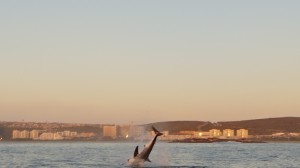
Later on the same day, Rainer spotted two southern right whales. They were so big that I couldn’t believe they were cetaceans. These creatures actually looked like the trunks of very big trees. They swam next to our boat for about an hour. They were a male and female couple. Before going to the depths of the ocean, they breached out of the water, giving us a show as if they had something to celebrate. It is always special to observe these magnificent creatures, a true spectacle of nature and wildlife. This species is even bigger than the humpback whales but they are slower and more relaxed, even around the boat.
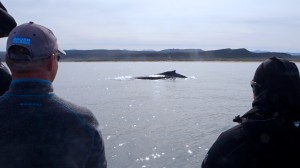
Rainer and Silke have a very wide range of contacts around South Africa, and luckily for me, they also know the managers of the fishery company in Mosselbay (Afro Fishing, who have been fishing commercially since 2007), so they arranged a visit to there for me. Thanks to Expert Tours I was going to be able to go on a fishing boat. Finally I was going to find out for myself how the sardine fishery was doing and try to understand if the rapid decline in sardine abundance after 2002 could be linked either in part or in full to the sardine catches. This adventure was very interesting and you can read the whole story of my research journey in the next issue of Ocean Geographic Magazine (September 2014).
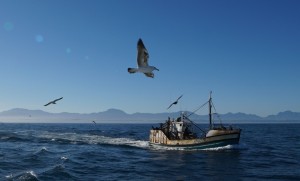
We traveled 1000 km in total during 10 days and we saw three species of whales, white sharks, dolphins, penguins and other seabirds! One of the most incredible experiences was swimming with seals. They were swimming close to a rocky shoreline. As soon as we jumped into the water, they started acting very curious towards us. I really enjoyed swimming between them, until I started thinking that maybe it was lunchtime for the great whites. I must admit that this species of sharks does make me slightly nervous, especially when surrounded by its food. I tried to relax and focus on the seals. Even though I was next to the boat, I really couldn’t stop thinking about a giant toothy mouth coming towards me as I had seen a few days before. It is impressive how traumatized the Jaws Movie Generation is. Even I, someone who has been close to other shark species and tries to stand up for their reputation daily, was scared to swim in great white shark waters.

Later we stopped at the National Park Tsitsikamma and Rainer suggested we should go diving in the bay. The water was blue and clear. An octopus, a shark (I’m not sure which species), a stingray, a curious seal and many colourful corals welcomed us into this paradise of a natural reserve. We stayed for two unforgettable days in one of the most beautiful places I have ever been. There were cabins in the middle of the forest surrounded by an incredible abundance of wildlife along the coastline. It was a beautiful and enriching experience.
We walked around and later Rainer took us on his boat to an impressive gorge next to the dive site. The mysterious aura of this place made me feel like if I was in the Batcave!
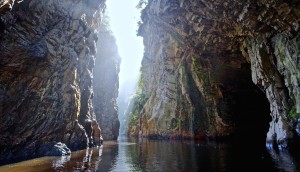
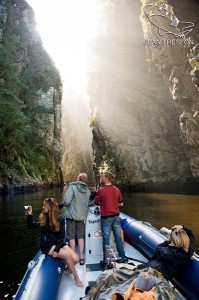
On the third day we decided to go by car to our final destination, Port Elizabeth, because there was a big storm brewing with 6 meter high waves.
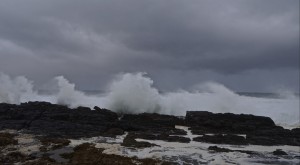
The team in the van was made up of cool and interesting people, including Rainer, Silke, their assistant, Stephan, two experienced professional underwater photographer/videographers, Jean Tresfon and Carl Ruysenaar. Carl and Jean have unbelievable stories of wildlife encounters. Receiving all this kindness and listening to all the stories allowed me to feel the power of travelling and meeting amazing people along the way.
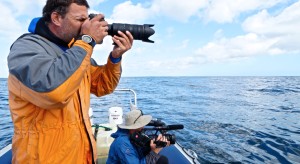
In Port Elizabeth we kept our hopes high and searched for sardines bait balls. Unfortunately we didn’t find sardines but we did see moving predator and anchor balls, which were fun to see from the boat. The birds would dive into the water feeding on the fish, but as soon as we jumped in, the fish were gone. Fortunately, on one of those times, southern right whales appeared just next to us! That was a dream coming true for me. Since seeing them in Argentina eight years ago, I wanted to be with them in the water. They were very relaxed, and I could swim right next to a couple of them. I will never forget that feeling.
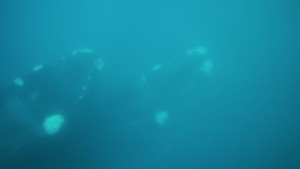
Rainer and Silke were very clear with us about the best way to interact with the marine wildlife with respect. They didn’t let us approach the whales if they didn’t want to interact with us. Swimming with big and wild species can be dangerous for both (us and the marine creatures) and in order to make sure that others may have the opportunity in the future. We have to respect the marine creatures decision of whether they interact and approach us. We need to remember we are the ones entering into their home and any accident that happens will always be our fault. Also if we bother a whale today, it could be the last time this individual decided to approach a human being.
Thanks to the knowledge and guidance of Expert Tours I understand that respect is the key in the interactions with marine life and it is also fundamental if you want to have fun and excitement encounters in and out of the water!
